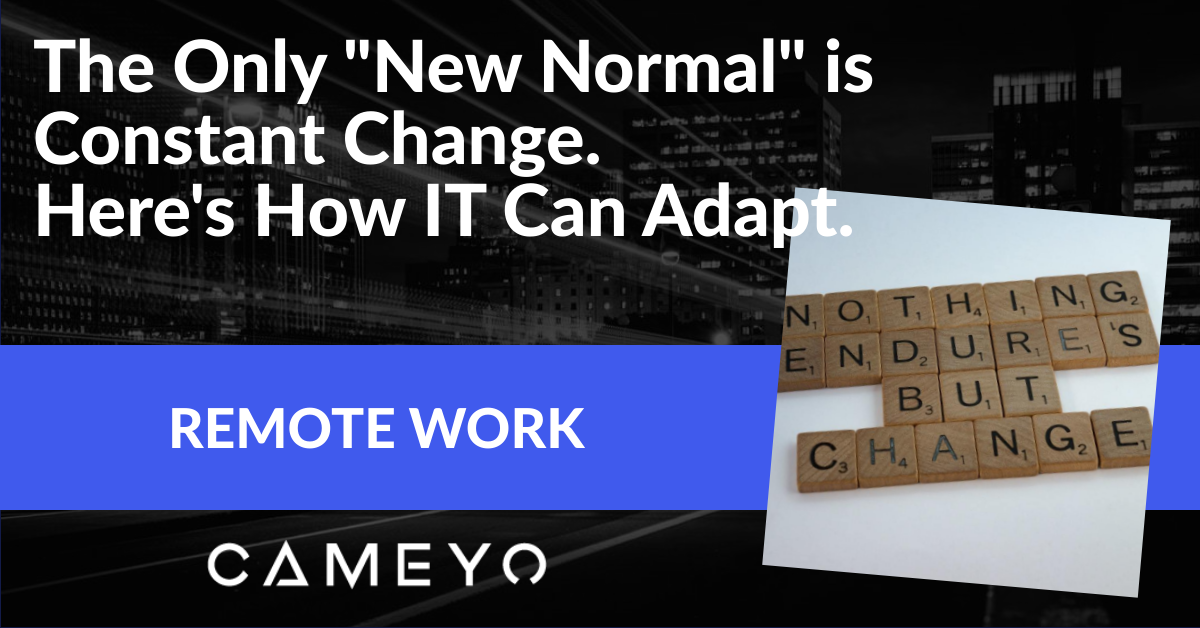Since March there’s been a lot of talk about the “new normal,” especially when it comes to remote work. But that phrase can be misleading. It’s often used to express the idea that yesterday’s status quo no longer applies to our current circumstances. What it doesn’t accurately capture is how things will look from now on.
Furthermore, the word normal assumes a uniformity of experience, as if these new conditions will be the same for most people.
However, that notion is far from reality. You really don’t need to look any further than the state of remote work. Some companies are allowing their employees to work from home on a permanent basis. Others, such as JP Morgan, are splitting parts of their workforce into remote and onsite employees. Still others are taking a hybrid approach, alternating employees between remote and onsite.
As you can see, there are a lot of blurred and overlapping lines in how companies are approaching remote work moving forward. And there’s also no guarantee that they will stick with the same workplace model forever once they’ve adopted it.
So, if anything, the only new normal is constant change. The situation on the ground will continue to shift not only in the near future but also over the long term in a post-COVID world. Organizations will have to be prepared to adapt and evolve as new trends emerge and they experiment with different flexible workspace strategies.
For them to do so, IT needs to be empowered with the right tools. If agility is the watchword, then IT has to have optimal systems and solutions in place to ensure that people can be productive from anywhere—even as the global situation changes.
Virtual application delivery as the foundation for digital workspaces
Virtual application delivery is an ideal way to stay responsive to the ever-changing workplace. Compared to traditional remote work solutions like virtual desktop infrastructure (VDI), virtual application delivery is more streamlined and better suited to the large numbers of enterprise employees who are now—or will be—working from home.
As its name suggests, virtual application delivery focuses on providing applications rather than full-blown desktops. Digital workspaces become much more flexible, less complex, and more cost-effective as a result. That has significant advantages in terms of bandwidth, hardware requirements, provisioning, ease of use, and much more.
Let’s look at several of those in more detail.
- Added simplicity – The targeted nature of virtual application delivery avoids saddling users with unnecessary features and software bloat. They have straightforward, on-demand access to just the applications they need on any device.
- Greater accessibility – A major work-from-home (WFH) challenge has been supporting users with widely varying levels of ISP service. Because it requires less overhead, application-only virtualization puts less strain on end users’ home networks.
- Reduced infrastructure – VDI solutions rely on a system of backend servers, storage and hosting. The ability to provide users with individual applications rather than complete desktop environments minimizes infrastructure requirements.
- Streamlined provisioning – Virtual desktops can be easier to provision than some remote work solutions, but they still call for detailed setup and configuration. With virtual application delivery, the provisioning process is lightning fast.
- Easier administration – VDI environments require specialized skillsets. IT admins have to be trained how to maintain and troubleshoot them. By contrast, it’s significantly easier to oversee and control a virtual application solution.
- Inherent security – VDI places a lot of burden on the user to follow strict protocols, and requires additional 3rd-party security solutions layered on top that add cost and complexity. Utilizing a virtual application delivery platform with a Zero Trust security model helps ensure that users cannot connect to and carry threats into your corporate network, regardless of which device they’re using.
- Increased scalability – Creating dynamic, flexible workspaces also means being able to right-size them to your workforce. Virtual application delivery lets your organization quickly scale its digital workspace capabilities as needed.
- Lower costs – All of these advantages can be reflected in your organization’s bottom line. For example, there are serious cost savings to be had from reducing your reliance on specialized infrastructure while also reducing provisioning times.
Be prepared for the new normal—whatever form it takes
Despite the fact that the “new normal” is defined by its lack of predictability, it is possible for organizations to prepare. The uncertainty over what tomorrow’s workplace will look like is precisely why digital workspace approaches like virtual application delivery are so essential.
When evaluating virtual application delivery solutions, make sure your the platform you select enables you to simply and securely adapt to the ongoing remote work changes. For example, Cameyo deploys in a matter of minutes, prioritizes security (without relying on VPNs), maximizes scalability and provides an intuitive, streamlined experience for users and admins alike. It’s the most cost-effective and future-proof way to support your remote workforce, regardless of how much the WFH movement evolves in the coming years.
Take a few moments and sign up today for your free trial of Cameyo. You’ll have the opportunity to see firsthand how application virtualization creates a versatile and scalable productivity platform for your remote employees—and enables your organization to respond to the ongoing changes in our “new normal.”
